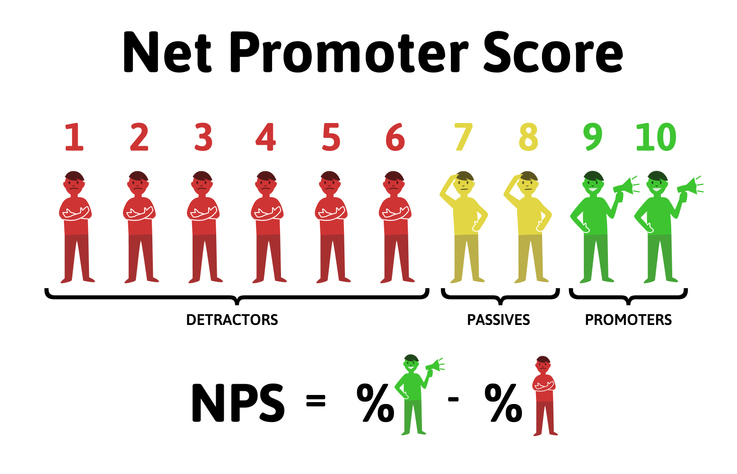Knowing me, knowing you
In Running Your Business
Follow this topic
Bookmark
Record learning outcomes
While it is entirely possible to run a business on a diet of random walk-in sales, it’s a wasteful, time consuming and expensive way of generating business. It’s much better to win and keep custom by understanding consumer loyalty.
One way of doing this is to generate what is termed a ‘net promoter score’ (NPS). Used to monitor business relationships, irrespective of whether it’s business to consumer or business to business, NPS gives insights into customer satisfaction, effectiveness of communications and how well the service is judged – and more. Many retailers – John Lewis, Vodafone and others – use NPS to great effect.
Through NPS, businesses can see if a customer would recommend it to others, and the degree of recommendation.
NPS calculations

NPS asks a series of ‘why’ and would questions which return scores of between zero to 10. The process condenses what firms want to ask into a 20-30 second questionnaire.
As to how to gauge responses, a score of 9-10 means customers are labelled as promoters. They are likely to come back while promoting the business to others. They are a great advocate for the business and will be loyal in the future.
A score of 7-8 labels a customer as passive. They are neither a promoter or detractor and are undecided and do not give active responses to the questions; they try to remain impartial.
However, and dangerously, a score of 0-6 labels customers as detractors. A detractor can be detrimental as they can become negative and give comments that will influence others.
Using NPS to best effect
Having a score gives an insight on a job well done or not. If the score is poor, the areas that need work and which need proactive action will be identified.
NPS can be used generally or specifically, depending on the strategy being deployed. For example, where text/email data is captured it can be used (with consent) to send a simple automated email asking for feedback after a customer has purchased. Alternatively, customers can be given an NPS sheet at the counter to complete.
But there is a note of caution. For NPS campaigns to work a business-wide strategy needs to be implemented and it needs to ensure that comments are not ignored, especially if they’re negative. Further, the pharmacy should actively seek to engage with those classified as promoters. Detractors should also see the same thought process – how will the pharmacy work with those that give a low score?
A predictor of growth
It’s not hard to see that if NPS scores are high, the pharmacy should be healthy and growing. Conversely, if scores are low it can be expected that the rate of growth for the business will be poorer. But it’s worth remembering that this may not always be the case – if the pharmacy is the only one in the locality it may thrive despite poor customer service and low NPS scores. Clearly it will wither as alternatives arise.
Arriving at an NPS score means determining the percentage of respondents that are promoters and the percentage that are detractors. The percentage of detractors then needs to be deducted from the percentage of promoters. So, for example, 100 customers are surveyed, and the result is made up of 70 promoters, 10 passives, and 20 detractors, the NPS would be 50.
Fundamentally, the closer the result to 100, the better it is and anything with a negative should be dealt with quickly. But it’s important to remember that NPS is not the be-all and end-all of customer satisfaction. Any business owner or manager worth their salt should have an ear to the ground for customer sentiment.
Summing up
NPS can be an effective method of seeking feedback with minimal input from customers. Used correctly, it can condense down a number of issues effectively into an easy to answer questionnaire. It’s important to note that scores can indicate a probable path of business growth but can equally illustrate areas of weakness that need work.
No matter the desire to seek answers, NPS requires that customers are continually monitored to note any deviations of their sentiment. But once those who are considered to be promotors have been identified, they should be considered – with consent – a marketing asset.
Additional information
Background: npsbenchmarks.com
NPS Calculator: npscalculator.com/en
